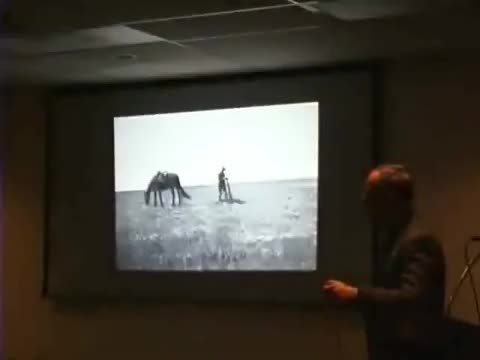Geologist Jay Harlan Bretz challenged uniformitarianism at 1927 Geological Society meeting
May 02, 2025 | Missoula, Missoula County, Montana
This article was created by AI summarizing key points discussed. AI makes mistakes, so for full details and context, please refer to the video of the full meeting. Please report any errors so we can fix them. Report an error »

The City of Missoula held a meeting on May 2, 2025, focusing on the historical significance of the Glacier Lake Missoula Ice Age floods and the contributions of notable geologists in understanding these events. The discussion highlighted the early 20th-century work of Jay Harlan Bretz, who faced significant criticism for his theories on catastrophic floods that shaped the landscape of Central Washington.
Bretz, born in 1882 in Michigan, initially worked as a high school biology teacher before pursuing a graduate degree at the University of Chicago. His master's thesis focused on glaciation in the Puget Sound area, which sparked his interest in the geological features of the region. By the 1920s, Bretz proposed that large ice age floods were responsible for the unique topography of the scablands in Central Washington. However, his ideas were met with skepticism from the geological community, which adhered to the principle of uniformitarianism—the belief that current geological processes are the key to understanding the past.
In 1927, Bretz presented his findings to the Geological Society of Washington, where he faced intense criticism from his peers. Despite the backlash, his work laid the groundwork for future research on glacial floods. Notably, Joseph T. Pardee, another prominent geologist, recognized the connection between Bretz's theories and the origins of the waters from Glacier Lake Missoula, which contributed to the erosion of the landscape.
Pardee, who had a deep connection to Montana, remained silent during Bretz's presentation, possibly due to the presence of his superior in the audience. The meeting underscored the importance of Bretz's contributions to geology and the ongoing relevance of the Ice Age floods in understanding the region's geological history.
The discussions at the meeting not only celebrated the legacy of these early geologists but also emphasized the need for continued exploration and understanding of the geological processes that have shaped Montana's landscape. The meeting concluded with a call for further research and recognition of the historical significance of the Ice Age floods in the context of Missoula's geological heritage.
Bretz, born in 1882 in Michigan, initially worked as a high school biology teacher before pursuing a graduate degree at the University of Chicago. His master's thesis focused on glaciation in the Puget Sound area, which sparked his interest in the geological features of the region. By the 1920s, Bretz proposed that large ice age floods were responsible for the unique topography of the scablands in Central Washington. However, his ideas were met with skepticism from the geological community, which adhered to the principle of uniformitarianism—the belief that current geological processes are the key to understanding the past.
In 1927, Bretz presented his findings to the Geological Society of Washington, where he faced intense criticism from his peers. Despite the backlash, his work laid the groundwork for future research on glacial floods. Notably, Joseph T. Pardee, another prominent geologist, recognized the connection between Bretz's theories and the origins of the waters from Glacier Lake Missoula, which contributed to the erosion of the landscape.
Pardee, who had a deep connection to Montana, remained silent during Bretz's presentation, possibly due to the presence of his superior in the audience. The meeting underscored the importance of Bretz's contributions to geology and the ongoing relevance of the Ice Age floods in understanding the region's geological history.
The discussions at the meeting not only celebrated the legacy of these early geologists but also emphasized the need for continued exploration and understanding of the geological processes that have shaped Montana's landscape. The meeting concluded with a call for further research and recognition of the historical significance of the Ice Age floods in the context of Missoula's geological heritage.
View full meeting
This article is based on a recent meeting—watch the full video and explore the complete transcript for deeper insights into the discussion.
View full meeting
